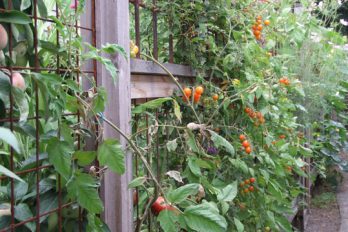We all lust after plants that we see on our travels, but bringing them home (even the most innocent looking plant cutting or seeds) could release an environmental tsunami of viruses, fungi, bacteria, or insects. Alas, it’s just not worth it. This list of top 10 pests and invaders shows why.
Asian long-horned beetle Destroys hardwood trees From China; believed to have been imported in packing material used in shipping. First found in the city of Vaughan in 2003.
Chestnut blight Fungus that destroys American chestnut trees; from Japan and China; introduced into North America in the early 1900s through imported chestnut lumber and nursery stock.
Common reed (Phragmites australis) Invasive; releases toxins that impede growth of other plants; from Europe and Asia; discovered in Annapolis Royal, N.S. in 1910
Dog-strangling vine (Cynanchum rossicum and C. louiseae) Invasive; can choke woodland plants including trees; thought to have been brought from Europe during WWII to be tested as filling for life jackets.
Emerald ash borer Kills all North American species of ash trees. From China and Eastern Asia; first found in Canada in summer 2002. Believed to have been introduced in packing material.
Garlic mustard (Alliaria petiolata) Invades forests; alters soil chemistry, allowing it to outcompete native plants. Brought by European settlers in the 1800s as an edible green.
Gypsy moth Larvae are known to eat the leaves of about 300 plants; of Eurasian origin, it was introduced into North America from Europe in the 19th century
Japanese knotweed (Fallopia japonica)Invasive; displaces other vegetation; fromAsia
Lily leaf beetle Eats lilies and Fritillaria spp.; native to Europe and Asia; believed to have come into Canada in 1945 through importation of bulbs.
Norway maple (Acer platanoides) Invasive; first brought from Europe in the 1700s
Photo: Asian long-horn beetle by USDAgov/Flickr




